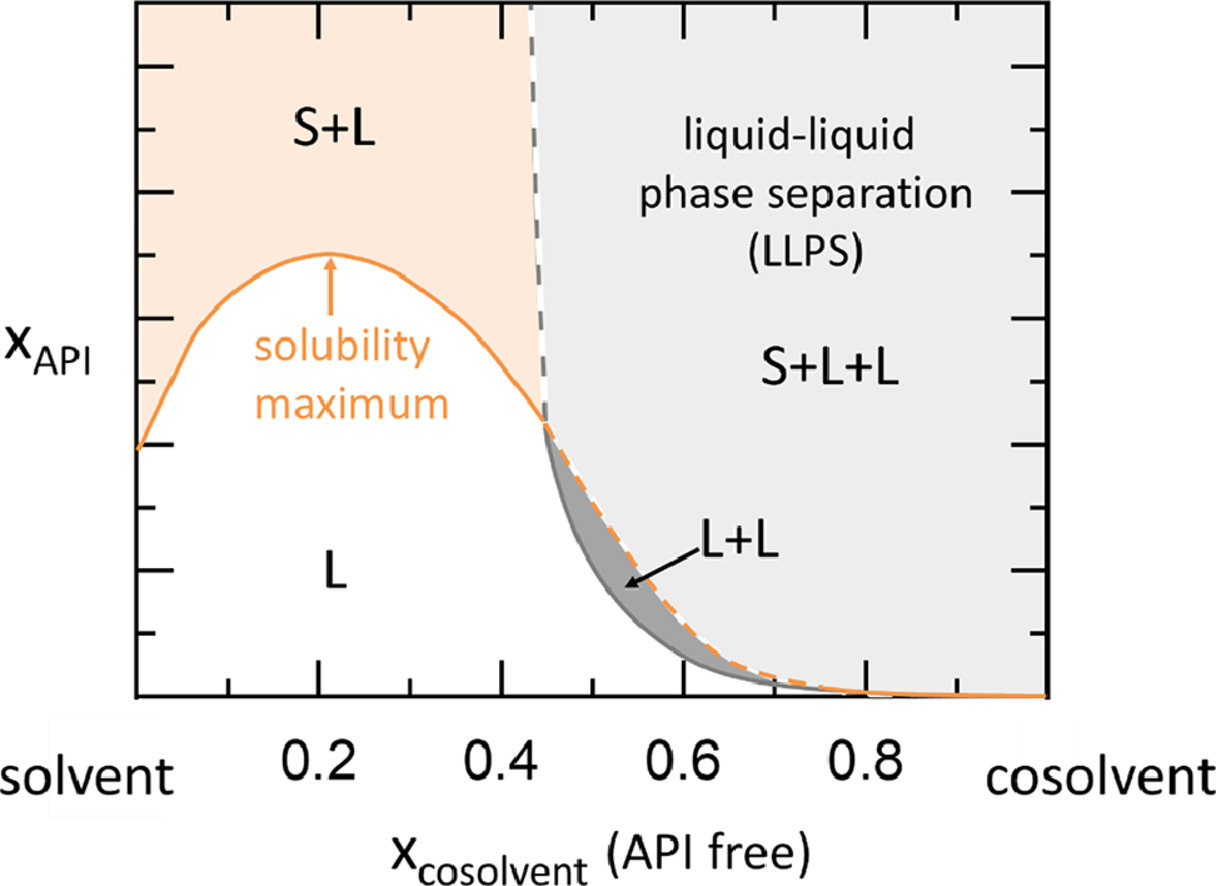Solvent mixtures in pharmaceutical development: Maximizing the API solubility and avoiding phase separation

Knowing the solubilities of active pharmaceutical ingredients (APIs) in pure solvents and solvent mixtures is essential for several manufacturing aspects of pharmaceutical product development. In this paper, we demonstrate that time-consuming and costly experiments can be reduced to a minimum using the thermodynamic model Perturbed-Chain Statistical Associating Fluid Theory (PC-SAFT) that can simultaneously predict API solubilities in pure solvents and solvent mixtures as well as unwanted liquid-liquid phase separation (LLPS).
We investigated the temperature-dependent solubility of naproxen, ritonavir, and indomethacin in the solvents acetone, dichloromethane, ethanol, ethyl acetate, methanol, 2-propanol, tetrahydrofuran, and water, and mixtures thereof. Solvent mixtures with predicted enhanced API solvation properties (cosolvency) were validated by experiments. Moreover, concentration regions in which LLPS was predicted to occur were also found to be in perfect agreement with the experimental data. Continue reading here
Article information: Solvent mixtures in pharmaceutical development: Maximizing the API solubility and avoiding phase separation – Author: Stefanie Dohrn, Christian Luebbert, Kristin Lehmkemper, Samuel O. Kyeremateng, Matthias Degenhardt, Gabriele Sadowski

